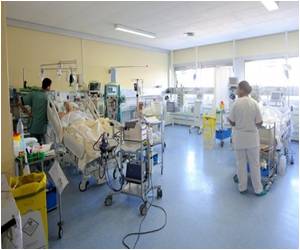
‘A novel unit to care for critically ill patients would significantly speed up access to specialized care, revealed a new study.’
Tweet it Now
Patient access to specialty care in the academic medical center setting is largely dependent on the availability of intensive care unit (ICU) beds in the receiving hospital; without an open bed to receive the patient, wait times for transfers can mean the difference between life and death, or the necessity for the patient to go to another hospital. UMMC, recognizing these limitations, has seen success with a novel solution with the opening of the nation's first Critical Care Resuscitation Unit (CCRU), in July 2013.
During its first full year of operation, for the subset of adult patients admitted for critical care, transfers increased 64.5% compared to a previous year (2,228 vs. 1,354) and patients arrived in nearly half the time (129 vs. 234 minutes), suggested data published in the Journal of the American College of Surgeons.
Lead author Thomas M. Scalea, the Honorable Francis X. Kelly Distinguished Professor of Trauma Surgery, Director of the Program in Trauma at UMSOM and Physician-in-Chief of the R Adams Cowley Shock Trauma Center at UMMC, said, "When we built the CCRU, we envisioned a unit mid-way between an emergency department and intensive care unit, similar to our Trauma Resuscitation Unit but for non-trauma patients. It has been phenomenally successful in its intended mission to serve critically ill patients, and we believe it should serve as a model for other institutions."
Despite UMMC's operation of an inter-hospital call center for the transfer of critically ill patients for over 20 years, Dr. Scalea noted prior to the opening of the CCRU, patients needing immediate critical care were sometimes unable to be transferred if a specialized ICU bed was unavailable, or transfer times were longer than desired, delaying access to lifesaving diagnostics, specialty care and surgery.
The CCRU is a six-bed, short-stay ICU located within the Shock Trauma Critical Care Tower at UMMC. Because the unit must be able to provide services at any time across a wide spectrum of diseases, it is staffed 24/7 by physicians and nurses with broad and diverse critical care experience. Together with UMSOM sub-specialists, the CCRU team provides consultations to referring physicians.
Advertisement
Co-author Lewis Rubinson, an Associate Professor of Medicine at UMSOM and Director of the CCRU, said, "We've discovered a new niche for resuscitation medicine. It's a paradigm change but easily adaptable for other academic medical centers. While we were fortunate to model the CCRU on a similar system already in place for our trauma patients, the fundamental principles are universal."
Advertisement
Senior author James O'Connor, Professor of Surgery at UMSOM and Critical Care Chief at UMMC, said, "We admitted nearly 1,000 additional transfer patients in the first year alone since opening the CCRU. Adding just six beds and borrowing practices we had honed in the Shock Trauma Center made our entire system more efficient."
Dr. Scalea said, "We built the CCRU to address the inefficiencies inherent in relying on a particular ICU to accept a transfer. ICUs are designed to manage patients for the entire course of their stay and they are highly specialized according to disease. The CCRU is for the immediate resuscitation, evaluation and disposition of all transfer patients. That is only part of what an ICU can do, but it's the only thing the CCRU does."
The authors are hopeful that continued research will produce definitive data showing that the CCRU lowers mortality for patients. Previous studies have shown that getting patients to the hospital faster improves outcomes, and data in this study did show a trend towards lower mortality, though not statistically significant. Of note, patients who were transferred to the CCRU and required surgery had a significantly shorter length of stay (13 vs. 17 days), demonstrating the value of expedited stabilization in the CCRU and admission to the appropriate subspecialty care unit.
UMSOM Dean E. Albert Reece, the John Z. and Akiko Bowers Distinguished Professor at UMSOM and Vice President of Medical Affairs at the University of Maryland, said, "This is a major advance in clinical science akin to a fundamental discovery. It is exciting to see another example of our faculty's commitment to discovery-based medicine."
Source-Eurekalert











